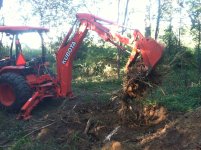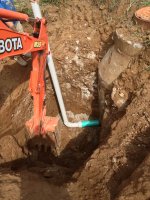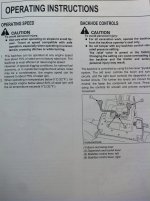rScotty
Super Member
- Joined
- Apr 21, 2001
- Messages
- 9,722
- Location
- Rural mountains - Colorado
- Tractor
- Kubota M59, JD530, JD310SG. Restoring Yanmar YM165D
It should be able to run all day at 2700 without overheating - with no load. When working the machine hard though, overheating is definitely a possibility, with any hydraulic system.
SNIP
Also, in the case of "slow and weak" don't overlook the obvious! (the directional levers used to switch between backhoe and 3pt modes). This one caught several of us out already.
Yes, the directional levers sure caught me out.
Good point about heat being due to how hard the machine is being loaded. At first I didn't see how Kubota could anticipate load. Then as I read through the workshop manual on their flow tests I see that they do the hydraulic flow test by setting at 2000/2200 RPM, loading the system until a specified minimum temperature is achieved, then remove the load and go to full RPM. Then load it again for a pressure test. I thought I'd seen warnings on max temperature, but today I only see the standard range (104 to 140 F)
The tests are very exact for flow rate and pressure. It does take a couple of special tools and a workshop manual, but given those things Kubota has made it easy to verify if the system is operating as designed.
Not having the special tools and all, I did a "cowboy" version of the flow tests by warming the machine up with no load and then timing the backhoe loader cycle times with a stop watch. Near as I could measure, mine came out right at factory spec. I timed it at full rated RPM - that being how I interpret the info on pg 7 of the backhoe manual.
rScotty



